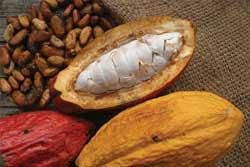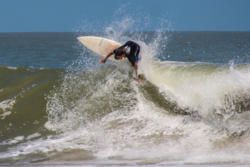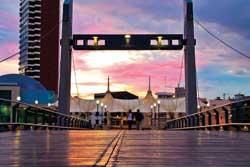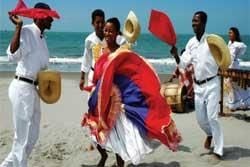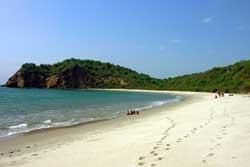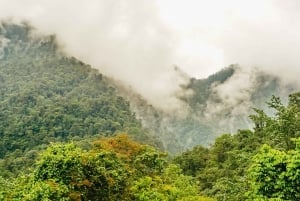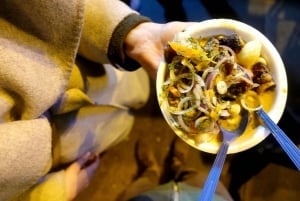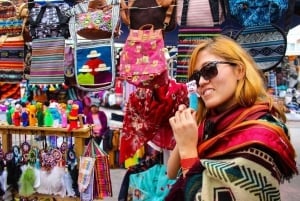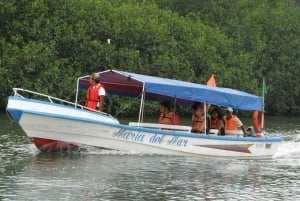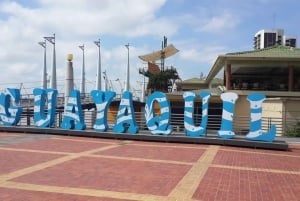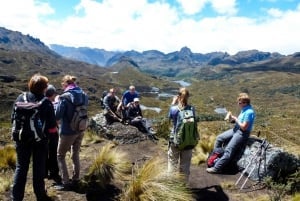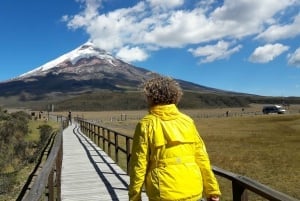The Coast Region
Bathed by the Pacific Ocean, the north coast, yet another proof of Ecuador’s ethnical diversity, is populated mostly by African American descendants who live in the green province of Esmeraldas. Lively dances and songs accompanied by the rhythmic music of the marimba are commonplace in the area. The beaches of Atacames, Mompiche, Same, and many others which are a constant magnet for nationals as well as foreigners, enjoy great weather for the most part of the year. An experience not to be missed when visiting the Ecuadorian coast is to taste the varied and delicious typical dishes; the "encocado" (coconut based) fish and shrimp are a feast to the palate. The "green" province can be reached from Quito by road, on a 4-hr drive, or by a 30-min plane flight.
The province of Manabi, on the west central part of the coastal region, offers innumerable opportunities of discovery and adventure for all the senses. Excellent seafood ("ceviche" is a must); intoxicating beaches like Canoa, Pedernales, and San Mateo; picturesque fishermen villages like San Vicente and Puerto Cayo, the latter marking the starting northern point for the Ruta del Sol (The Sunshine Route); thriving coastal cities like Manta and Bahía de Caráquez; protected natural areas like the Machalilla National Park; these are just a few of the many surprises this area has in stock for its visitors. Along almost the whole Ecuadorian coast, but especially by the shores of the town of Puerto López, in the province of Manabí, every year, normally between June and October, but frequently even from May until November, hundreds and even thousands of humpback whales arrive to breed and rear their cubs in Ecuador’s warm waters, offering spectacular whale-watching experiences. Hospitality is a main trait of the people from Manabí; they are known as excellent hosts.
As one travels further south, surfing and bohemian lifestyle fans find their Mecca on the beach of Montañita, very well-known for its good surfing waves as well as its relaxed atmosphere and convenient accommodation and dining options. The road south of Montañita offers beautiful scenery and, little by little, more urban development, as one approaches the most southern point of the Ruta del Sol, the popular beach resort of Salinas which is also a center for sport fishing in the country.
A one and a half-hour drive east from Salinas takes one to the city of Guayaquil, passing along the way the Cerro Blanco Protective Forest, one of the few remainders of the Tropical Dry Forest ecosystem, worth a visit as it is site to many animal and plant species. Guayaquil, located on the shores of the Guayas River, on the coastal inland, is Ecuador’s largest city and its main port. It is a vibrant commercial city inhabited by enterprising and lively people. The Parque Histórico, the colorful Las Peñas neighborhood, and the Malecón 2000 (the river front promenade), are a few of the compulsory visits here.
Ecuador is a country with innumerable natural riches. Coffee, cocoa, banana, rice, and shrimp are the main products of the coast, and nowadays many productive "haciendas" are open to the public for those interested in learning about these activities, especially in the southern region, on the way to the city of Machala, near the Peruvian border.


